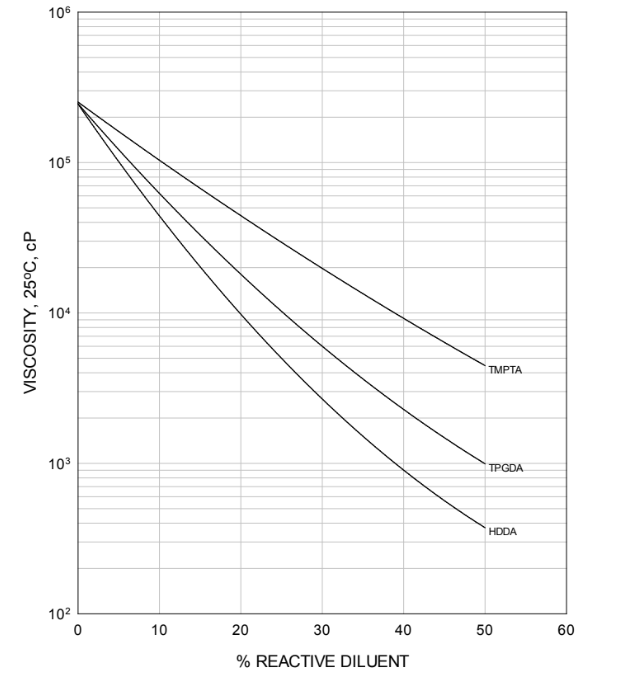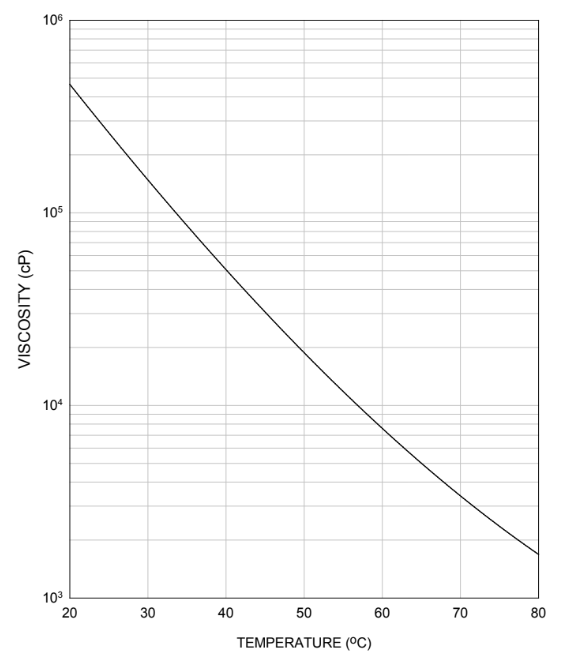Enhanced TDS
Identification & Functionality
- Blend
- No
- CASE Ingredients Functions
- Chemical Family
- Country of Origin
- Function
- Binder
- Product Code
- MITM00460
- Single Ingredient
- Yes
- Technologies
- Product Families
Features & Benefits
- CASE Ingredients Features
- Performance Highlights
EBECRYL® 8807 is characterized by:
• Moderate viscosity
• Light color
UV/EB cured products based on EBECRYL® 8807 are characterized by the following performance properties:
• Excellent surface cure in air
• Good flexibility and toughness
• Abrasion resistance
• Non-yellowing
The actual properties of UV/EB cured products also depend on the selection of other formulation components such as reactive diluents, additives, and photoinitiators.
Applications & Uses
- Application Method
- Coating End Applications
- Compatible Substrates & Surfaces
- Cure Method
- Markets
- Applications
- Product Applications
Formulated UV/EB curable products containing EBECRYL® 8807 may be applied via direct or reverse roll, offset gravure, metering rod, slot die, knife over roll, air knife, curtain and immersion coating methods.
EBECRYL® 8807 is recommended for use in:
- Coatings for wood, cement and composite flooring
- Adhesives or sealants cured with low intensity lamps
- Flexible coatings requiring rapid cure in air
Table compares the surface cure response of EBECRYL® 8807 with three commercial acrylated aliphatic urethanes.
All were formulated to equal oligomer content. EBECRYL® 8807 requires a significantly lower UV dose to achieve surface cure.
TABLE I - COMPARISON OF SURFACE CURE RESPONSE:
A B C EBECRYL 8807 35 - - EBECRYL 284 (Aliphatic urethane acrylate oligomers) - 40 - Competitive aliphatic urethane acrylate - - 46.7 TPGDA 40 35 28.3 TMPTA 25 25 25 1-Hydroxycyclohexyl phenyl ketone (Photoinitiator) 4 4 4 Viscosity at 25°C, cP 408 412 444 UV energy, mJ/cm² 495 914 565
Properties
- Physical Form
Technical Details & Test Data
- Viscosity vs Percentage Reactive Diluent
EBECRYL® 8807 - Viscosity Reduction With Reactive Diluents:

- Graph shows the viscosity reduction of EBECRYL® 8807 with 1,6-hexanediol diacrylate (HDDA),trimethylolpropane triacrylate (TMPTA), and tripropylene glycol diacrylate (TPGDA). Although viscosity reduction can be achieved with non-reactive solvents, reactive diluents are preferred because they are essentially 100 percent converted during UV/EB exposure to form a part of the coating, thus reducing solvent emissions.
- The specific reactive diluents used will influence performance properties such as hardness and flexibility.
- Viscosity vs Temperature
EBECRYL® 8807 - Viscosity vs. Temperature:

Graph illustrates the change in viscosity of EBECRYL® 8807 with increasing temperature.
Packaging & Availability
Principal Information
- Group Principal Number
- S000001
- Principal
Storage & Handling
- Storage Conditions
- Care should be taken not to expose the product to high temperature conditions, direct sunlight, ignition sources, oxidizing agents, alkalis or acids.
- This might cause uncontrollable polymerization of the product with the generation of heat.
- Storage and handling should be in stainless steel, amber glass, amber polyethylene or baked phenolic lined containers.
- Procedures that remove or displace oxygen from the material should be avoided.
- Do not store this material under an oxygen free atmosphere.
- Dry air is recommended to displace material removed from the container.
- Wash thoroughly after handling.
- Keep container tightly closed.
- Use with adequate ventilation.
- Upon storage, EBECRYL® 8807 may show signs of crystallization.
- This crystallization can be removed by heating containers of EBECRYL® 8807 to a uniform temperature of 60°C.
- Ovens or hotboxes are recommended methods of heating.
- Heating tapes should not be used. In typical formulations, EBECRYL® 8807 does not exhibit signs of crystallization.
Other
- Appearance
- Clear liquid
- Appearance (SDS)
- Clear viscous liquid
- Color (SDS)
- Colorless to straw
- Item Number
- Odor (SDS)
- Acrylate
- Other Hazards
- Polymerization may occur from excessive heat ,contamination or exposure to direct sunlight , Contact with skin may cause a cross-allergic reaction in persons already sensitized to acrylates.
- Protect from Freezing
- Yes
- Temperature Control
- Yes
- USA/DOT UN Number
- Not Applicable
- Material Composition
Value Units Test Method / Conditions Isocyanate Group Content max. 0.2 % % Oligomer Content 100.0 %(W/W) %(W/W) - Mechanical Properties
Value Units Test Method / Conditions Elongation 54.0 % % at break, UV cured 125µm thick films Tensile Modulus 7500.0 psi psi UV cured 125 μm thick films Tensile Strength 1950.0 psi psi UV cured 125 μm thick films - Optical Properties
Value Units Test Method / Conditions Color Scale max. 1.0 Gardner Gardner Gardner Color Scale - Physical Properties
Value Units Test Method / Conditions Density 1.05 g/mL g/mL at 25°C Glass Transition Temperature (Tg) 32.0 °C °C Dynamic Mechanical Analysis (DMA) UV cured, 125μm thick films Storage Temperature 39.0-104.0 °F °F Viscosity 5600.0-9400.0 mPa.s mPa.s at 60°C - SDS Physical and Chemical Properties
Value Units Test Method / Conditions Boiling Point (SDS) min. 100.0 °C °C Density (SDS) 1.05 g/cm³ g/cm³ Vapor Pressure (SDS) max. 0.013 hPa hPa at 20°C Viscosity (SDS) 6000.0-9000.0 mPa.s mPa.s at 60°C - Shelf Life & Stability
Value Units Test Method / Conditions Shelf Life 0.0 d d
